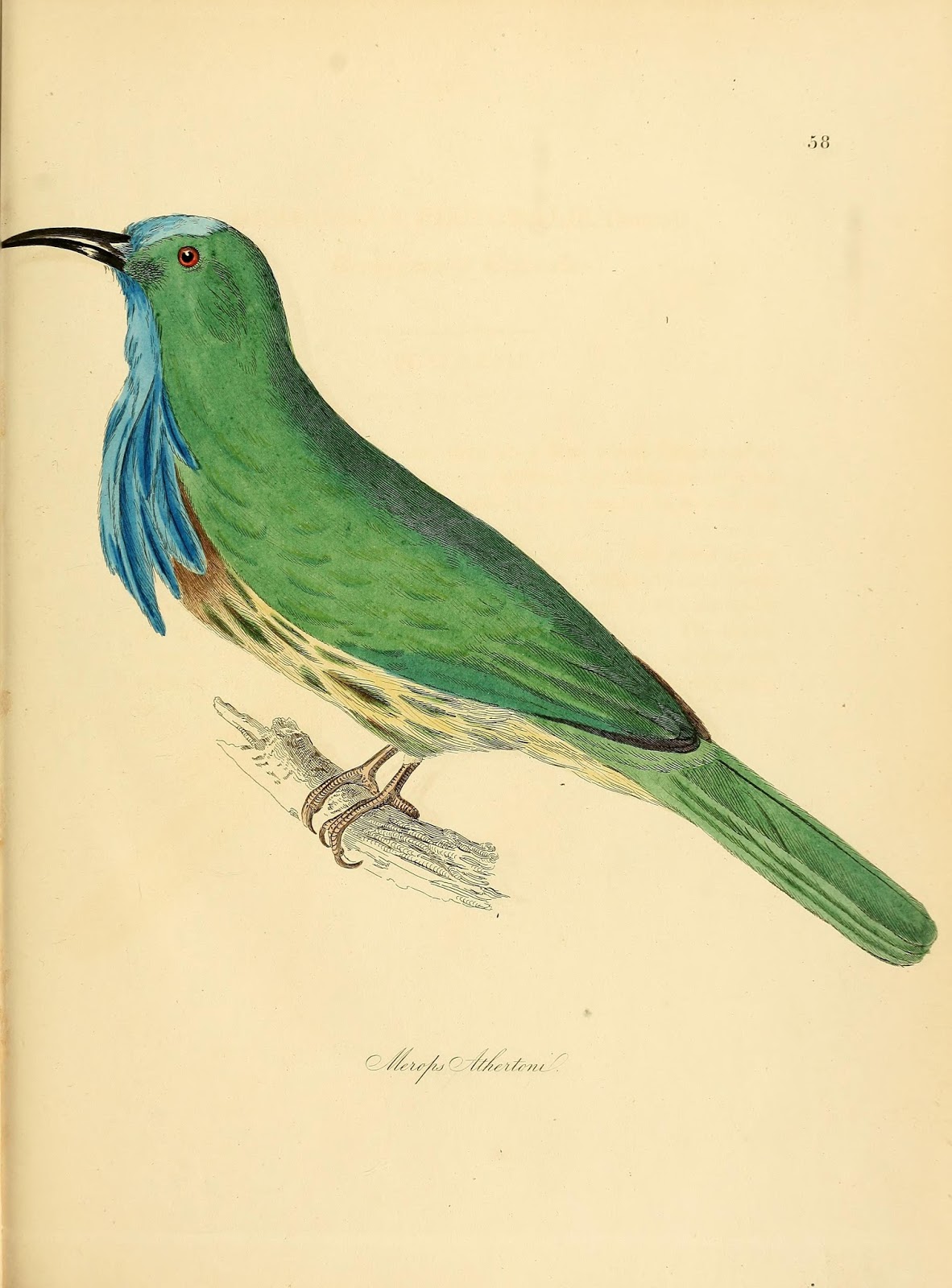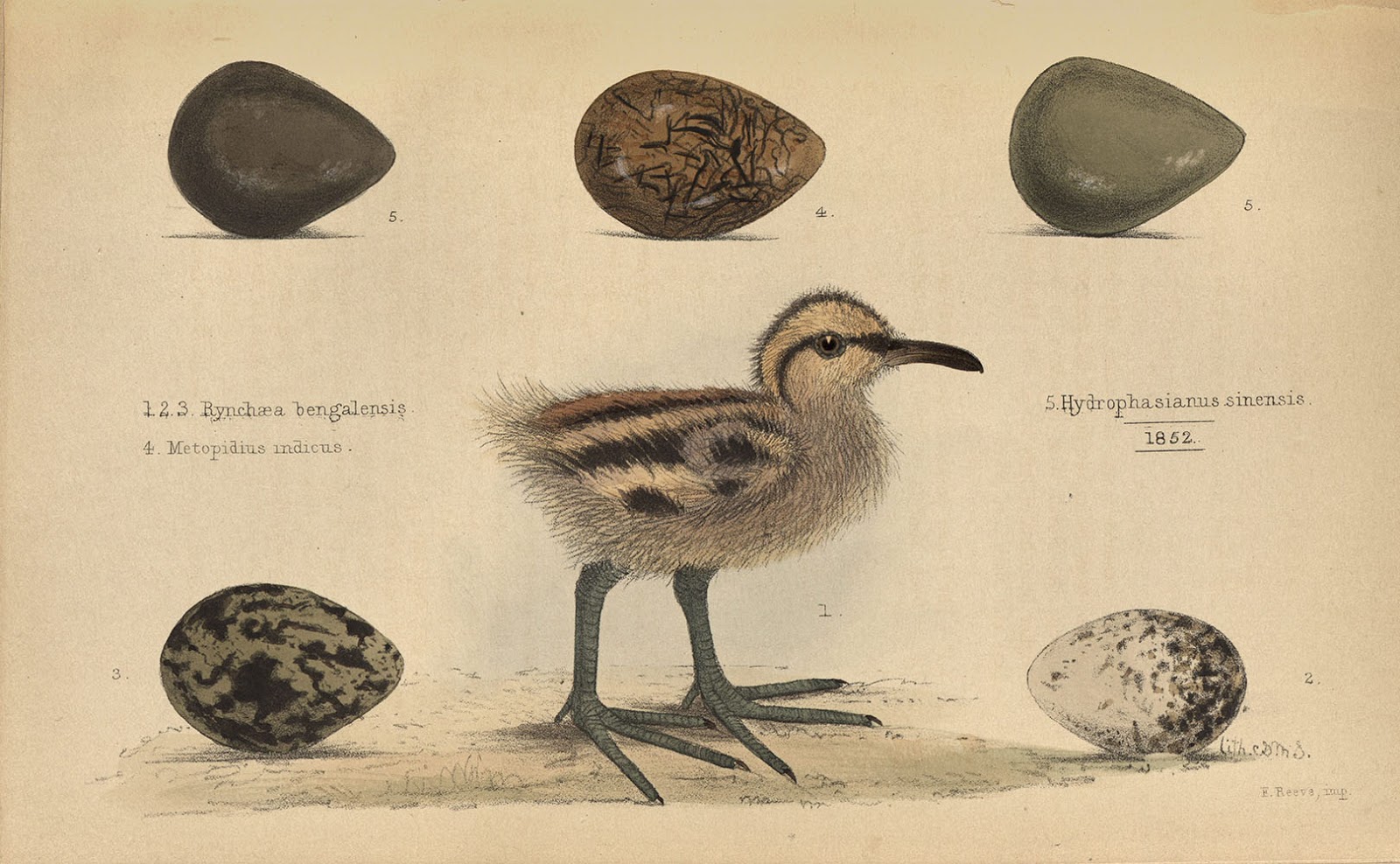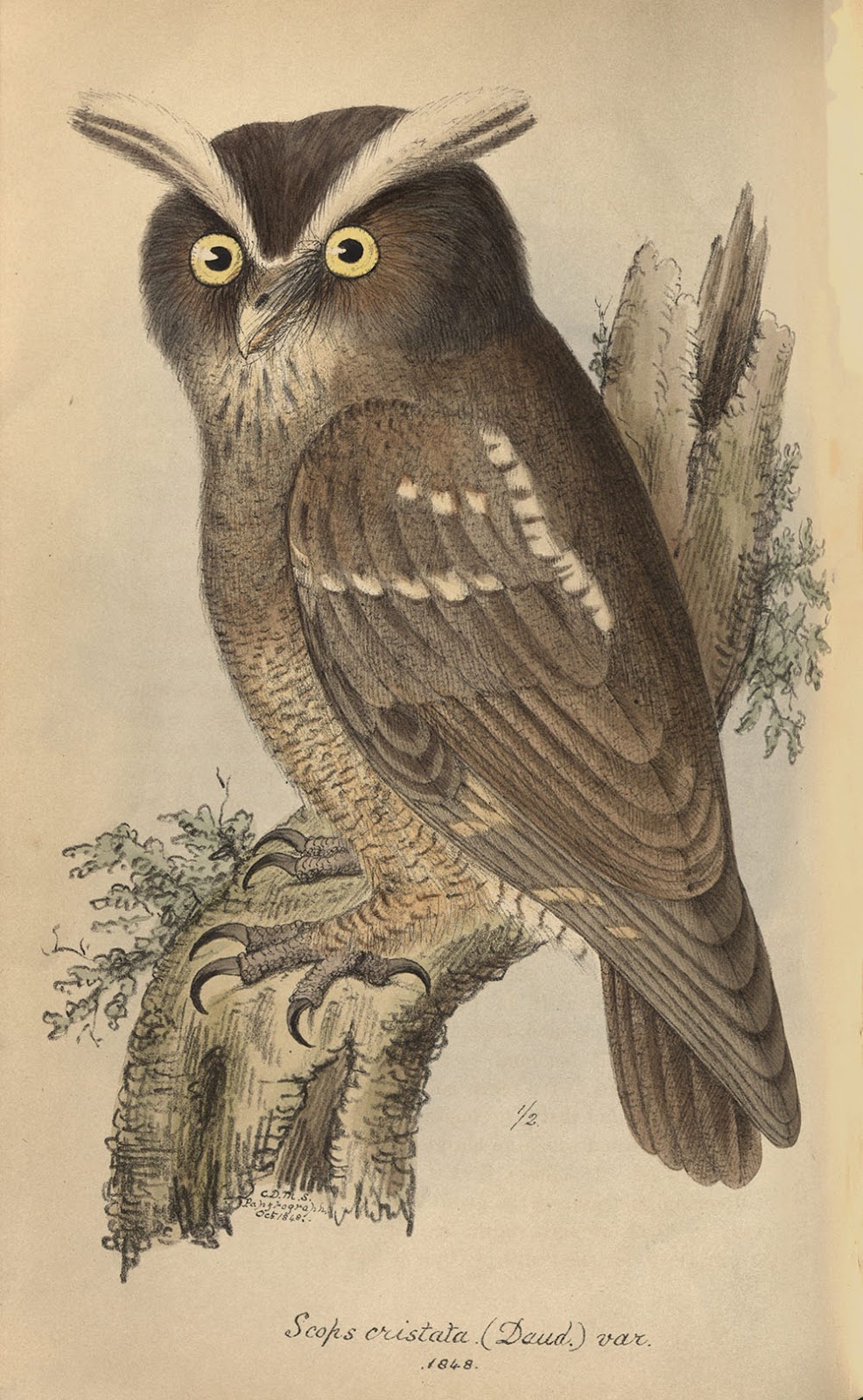The Final Contribution of Sir William Jardine, Scottish Ornithologist
 |
| Jardine’s parrot or red-fronted parrot (Poicephalus gulielmi). Drawn from a specimen brought back from the Congo by Jardine’s son William, for whom it was named. Jardine, William. Contributions to Ornithology, Vol. 2. Edinburgh :W.H. Lizars, 1848-1853. Digitized by the Academy of Natural Sciences of Drexel University, Library and Archives. http://s.si.edu/2xpPC9Z. |
As was the case for many of his contemporaries, Sir William Jardine, 7th Baronet of Applegarth, was a man of many talents. Ichthyology, botany, entomology and geology were all subjects in which Sir William was thoroughly knowledgeable, but it was ornithology that was his true passion.
It was out of this passion that Jardine produced two original works on ornithology: Illustrations of Ornithology and the annual periodical Contributions to Ornithology. Just five volumes of Contributions were produced from 1848-1852; the Academy of Natural Science’s library copy is bound in three volumes. Contributions is not only the first ornithological periodical produced in Britain, but one of Jardine’s finest natural history works…and his last.
 |
| Two examples of the genus Todirostrum, drawn by Catherine Strickland. Jardine, William. Contributions to Ornithology, Vol. 5. Edinburgh :W.H. Lizars, 1848-1853. Digitized by the Academy of Natural Sciences of Drexel University, Library and Archives. http://s.si.edu/2vVN8lQ. |
Born in Edinburgh on the 23rd of February, 1800 to Sir Alexander Jardine, 6th Baronet of Applegarth, and Jane Maule, Sir William Jardine grew up in a world of relative wealth and privilege. Not only was he afforded a title, but he stood to inherit Jardine Hall, a stately home located on an estate of over 5,000 acres of land along the banks of the River Annan. At the age of 18, he began medical training at Edinburgh University. Although his intended path was that of a medical doctor, his friendship with the school’s janitor and preserver of specimens for the university museum led him to his true calling of ornithology.
Upon his father’s death in 1821, Jardine not only inherited a title and an estate, but the necessary funds to purchase the ornithological specimens which would become the basis of his renowned collection, which would grow to over 12,000 skins. Despite his newfound obligations as Baronet, including overseeing over 900 parishioners and 11 farms, Jardine found ample time to produce several notable works on ornithology and other subjects.
 |
| The blue-bearded bee-eater (Nyctyornis athertoni). William Jardine and Prideaux John Selby. Illustrations of ornithology, Vol. 2. Dublin :Longman, Rees, Orme, Brown, & Green, and S. Highley, [1826-1835]. Digitized by Smithsonian Libraries. http://s.si.edu/2wvltJV. |
The first of these works, Illustrations of Ornithology, was a collaboration with fellow ornithologist Prideaux John Selby detailing non-British birds from around the world. Jardine and Selby saw a deficiency in previously published works on the subject, which typically only included an example from each genus. The work was organized mainly by Jardine, who also took on the Herculean task of obtaining the specimens from which the work’s illustrations would be produced. Jardine enlisted the help of 3 dealers, 12 collectors, and 4 naturalists from around the world in order to obtain the necessary specimens. The work was produced in three volumes from 1825 to 1835.
In 1848, Jardine embarked on what was to be his finest and last work, Contributions to Ornithology, an annual work which detailed recent advances in ornithology. Contributions was created from the efforts of multiple members of the Jardine clan. While Jardine was responsible for organizing the work and writing a majority of the text, he also had the assistance of his daughter Catherine’s husband, Hugh E. Strickland. Strickland helped expedite the production of the work while contributing multiple articles. It was Hugh E. Strickland himself that presented the Academy’s copy of Contributions to Ornithology.
Catherine was a keen illustrator and produced at least 42 of the 94 illustrations that appeared in Contributions. While Catherine had previously provided many illustrations for her father’s works, this was the first instance in which her initials appeared on the final printing.
 |
| Juvenile bird and eggs, drawn by Catherine Strickland. Jardine, William. Contributions to Ornithology, Vol. 5. Edinburgh :W.H. Lizars, 1848-1853. Digitized by the Academy of Natural Sciences of Drexel University, Library and Archives. http://s.si.edu/2vVS5uL. |
Jardine’s son William, a world traveler, sent his father many specimens to be included in the publication. Jardine’s brother in-law, W.H. Lizars, did the engravings.
The illustrations found in Contributions were perhaps the most remarkable element of the work. In addition to Catherine’s illustrations, Jardine also was responsible for some of the plates. It is also possible that one of Jardine’s other daughters, Helen, produced some plates or backgrounds for the work. The illustrations were created by a variety of means, including etching, lithography, and the relatively new papyrography. Jardine was so taken with the new method of papyrography that the first volume of Contributions included instructions on how the layman might achieve this method.
 |
| Crested owl (Lophostrix cristata) drawn by Catherine Strickland using papyrography. Her initials can be seen near the bottom of the illustration. Jardine, William. Contributions to Ornithology, Vol. 1. Edinburgh :W.H. Lizars, 1848-1853. Digitized by the Academy of Natural Sciences of Drexel University, Library and Archives. http://s.si.edu/2wBouYm. |
The first article to appear in Contributions demonstrated Jardine’s desire and need for a plethora of new foreign bird specimens. “Hints for preparing and transmitting ornithological specimens from foreign countries” provided travelers, who might have previously abstained from collecting specimens due to lack of knowledge, with instruction on the tools and skills needed to produce bird specimens. Not only were step-by-step instructions on how to preserve birds provided, but also how to retain crucial observations about the bird.
Contributions also included articles by the who’s who of ornithologists of the day. John Gould contributed multiple times, including an article on three new species of hummingbirds, a topic on which he would later dedicate an entire work to. Charles Lucien Bonaparte, nephew of Napoleon, would also contribute a text on finches.
The production of Contributions was cut short in 1852 by the untimely death of Strickland, who had been struck by a train. His death devastated the two other principal organizers of the work, Jardine and Catherine Strickland. Jardine saw in Strickland a successor, someone who had the same interest in natural history that his sons did not. Jardine was so affected by Strickland’s death that he never produced another natural history work, only Strickland’s memoirs.
References
- Jackson, Christine E. and Peter Davis. Sir William Jardine: A Life in Natural History. New York, NY: Leicester University Press, 2001.
- Jardine, William. Contributions to Ornithology. Edinburgh: W.H. Lizars,1848-1853.
- The Late Sir William Jardine. (1874). Nature, 11, p. 74.





Leave a Comment